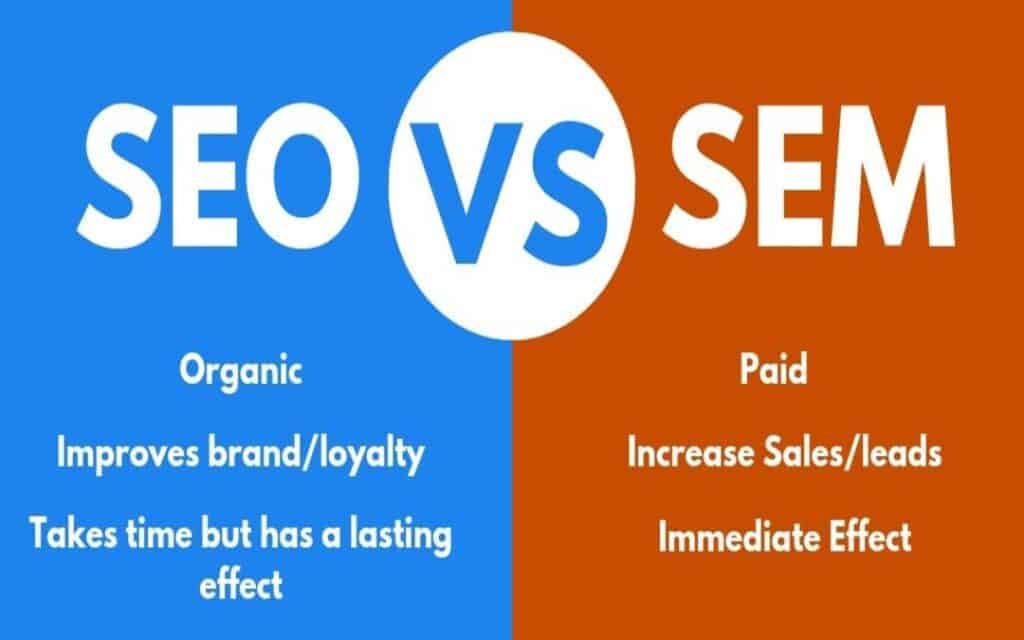SEO vs. SEM - What's the Difference
Search Engine Optimisation or SEO, is all about increasing your organic results for relevant searches.
Contrary to some opinions it is not simply a matter of quantity of posts over quality of material that is published on your website. Relevancy is the key to have relevant clients to be site visitors then it is up to website to create your offer so appealing that they cannot resist contacting your business.
SEM was initially considered to encompass of strategies used to increase traffic to your website.
But the term SEM, it is now used to refer to the paid side of attracting site visitors. Sometimes referred to PPC or Pay per Click. Predominately referring to Google AdWords or Bing Ads.
Search Engine Marketing strategies are more or less an instant to increase your traffic to your website.
Google is easily the most popular Search Engine
- Google 95.39%
- Bing 3.25%
- Yahoo! 0.5%

Most Popular Search Engine?
Google Adwords is the most popular paid search platform, followed by Bing Ads,
SEO and SEM tend to work well together, with some of a company’s investment going into content creation for the former, and some going into paid search for the latter. Aside from the payment aspect of SEM, one of the biggest differences between the two is the ability to seriously hone in on a particular demographic or audience for super targeted ads.
Customer groups you can target with SEM.
Targeting customers in your online marketing almost knows no bounds.
Here are some of the top ways you can use SEM to speak to your audience:
By geography: If you are a local store selling Homewares, you can target ads to customers within a vicinity around your shop to make sure they’re aware of your presence, and know you’re not far away.
Another way of using geographic targeting is to push ads exclusively outside of your local area, for example if you run a tour company and want to appeal to travellers who are currently far away, but planning a trip to your location.
By time: Let’s say you’re a business that delivers pizza. It wouldn’t make much sense to run paid ads at 9am in the morning. From 5pm to 9pm however, when people are hungry and could be tempted into skipping the shop-prep-clean process, would be the perfect time to push your paid ads.
By behaviour: Search engines are clever enough to follow a consumer’s behaviour, so you can create audience segments cut along the lines of the way people act online. For example, a simple one is to target those who have already visited your site, which is called remarketing, and is why you’ll often see ads online for sites you have already been to. Another sneaky option (but often worthwhile!) is to target customers who are fans of your competitors, which is easy to do with Facebook advertising as so many people offer insights into their preferences with their listed interests.
By device: You can even target your ads based on what type of device your audience is browsing on. For example, if you’re advertising a game app, it would make more sense to target tablets and mobile phones, but if you’re promoting a business that people prefer to view on a laptop or desktop computer, you can skip paid ads on mobile and tablets.
SME Design are digital experts who work with many businesses to ensure their SEM is as effective as it can be. If you’d like to chat with SME Design about how we can create and implement an SEM strategy to connect you with the right customers, click through to book in a call back.
